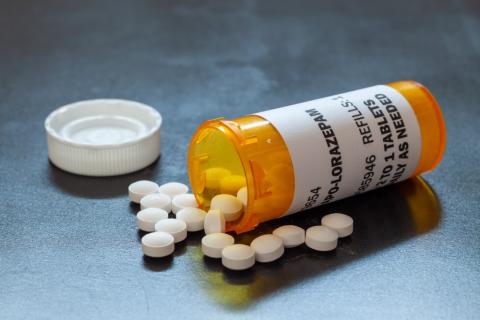Vall d'Hebron Hospital
If you are the contact person for this centre and you wish to make any changes, please contact us.
Endocrinologist and coordinator of the Obesity Unit at Vall d'Hebron Hospital.
Oncologist at the Colon Cancer Unit of Vall d'Hebron Hospital.
Head of Adult Mental Health at Fundació Hospitalàries Barcelona, assistant psychiatrist at the Vall d'Hebron University Hospital psychiatry department, and associate professor in the Department of Psychiatry and Legal Medicine at the Autonomous University of Barcelona (UAB)
Director of the Digestive System Research Unit at the Vall d'Hebron University Hospital in Barcelona and former president of the Spanish Society of Microbiota, Probiotics and Prebiotics (SEMiPyP)
Head of the Oncology Department of the Vall d'Hebron University Hospital of Barcelona and Director of the Vall d'Hebron Institute of Oncology
Specialist in obstetrics and maternal-fetal medicine at the Obstetrics Department of the Vall d'Hebron Hospital.
Director of the Clinical Neuroimmunology Laboratory at the Multiple Sclerosis Centre of Catalonia (Cemcat) and neurologist at the Vall d'Hebron University Hospital in Barcelona
Specialist in Pneumology at the Vall d'Hebron Hospital in Barcelona
Nutritionist and researcher at the Endocrinology and Nutrition Department of Vall Hebron University Hospital, member of the Comprehensive Obesity Treatment Unit and the Diabetes and Metabolism Research Group at the Vall Hebron Research Institute.
Head of the Laboratory of Gene Therapy in Neurodegenerative Diseases of the VHIR-UAB Mixed Unit

The journal Nature Medicine has published the results of the phase III STEER clinical trial for the treatment of spinal muscular atrophy in children aged between two and 18 years. A single dose of gene therapy administered directly into the cerebrospinal fluid showed an improvement in motor function in the children who received it in the clinical trial (75 compared to 51 with placebo). The drug in question is onasemnogene abeparvovec. On 24 November, the US Food and Drug Administration approved this treatment under the trade name Itvisma, from Novartis, based on data from this trial, making it the first treatment available for children over two years of age.

According to a study published in the journal JAMA Health Forum, the use of the benzodiazepine lorazepam by the character Victoria Ratliff in the series The White Lotus was associated in the United States with an increase in Google searches for this medication, including queries about how to obtain it online. The series generated 1.6 million more searches than usual over a 12-week period. Although the study reflects searches for information and not actual consumption, the abuse of anti-anxiety drugs is a fact: illegal sales of benzodiazepines have increased in the United States, and Spain leads the rankings in terms of consumption.

Severe combined immunodeficiency due to ADA enzyme deficiency is a rare disease that, without treatment, usually causes death within the first two years of life. These "bubble children" are currently treated with a bone marrow transplant or with injections that aim to restore, to the extent possible, the function of this enzyme. Now, an international team presents the results of a gene therapy administered to 62 children with the disease between 2012 and 2019. The therapy was effective in 95% of cases and did not cause serious complications, according to the authors, whose work is published in the journal NEJM.

An analysis published in the medical journal The BMJ points out that lifestyle changes recommended by doctors to people with obesity, focusing on calorie restriction and increased physical activity, have little effect on long-term weight loss, fail to significantly reduce cardiovascular risks and, yet, can lead to discrimination, stigmatisation and eating disorders. The authors also point out that weight alone is an inadequate measure of a person's health, as reflected in recent clinical guidelines, and propose a ‘health for all sizes’ approach with effective, patient-centred care.

So-called precision oncology involves the use of drugs that target specific molecular alterations in the tumour. These therapies are usually tested in clinical trials in adults and most have not been approved for use in children. An opinion article calls for these trials to be extended to children as well, given the difficulty of conducting such trials in children due to the small number of cases. According to the authors, who publish the text in the journal Trends in Cancer, given that children and adolescents tend to tolerate therapy better than older adults, ‘the time has come to consider age-agnostic approvals, i.e. approvals that include children and adults of any age’.

Prenatal exposure to triptans—alone or in combination with other migraine medications—does not increase the risk of developmental disorders in children up to age 14, according to research published in Neurology. The study is based on data from more than 26,000 pregnancies in a national registry in Norway and includes autism spectrum disorders, language disorders, and attention deficit hyperactivity disorder, among other diagnoses.

A review of 202 studies involving more than 56 million mother-child pairs has observed an association between maternal diabetes — including pre-pregnancy and gestational diabetes — and an increased risk of neurodevelopmental disorders in children, such as autism spectrum disorders, attention deficit hyperactivity disorder or intellectual disability. The authors, who publish the results in the journal The Lancet Diabetes & Endocrinology, call for a cautious interpretation of the association, as there is currently little evidence of a causal relationship.

The work of a global commission, published in The Lancet Diabetes & Endocrinology and endorsed by more than 75 medical organisations worldwide, presents a new approach to diagnosing obesity. This is based on other measures of excess body fat, in addition to body mass index (BMI), and on objective signs and symptoms of poor health at the individual level.

Newborns with Down syndrome, as they grow, face a higher risk of developing leukemia compared to those without the syndrome. An international team has sequenced the genes of more than 1.1 million cells from fetuses with and without Down syndrome, and it has discovered that the extra chromosome 21 they have alters the way DNA is packaged inside cells. According to the authors, whose research is published in Nature, this difference affects the regulation of certain genes and may contribute to the development of leukemia.

An international team of researchers has conducted a meta-analysis of 137 clinical trials involving nearly 90,000 people to assess the migraine efficacy of 17 available drugs. Their conclusions are that four drugs in the triptan group are more effective and cheaper than newer drugs such as gepants or lasmiditan, and that the efficacy of the latter is comparable to that of paracetamol and most anti-inflammatory drugs. The results are published in The BMJ.